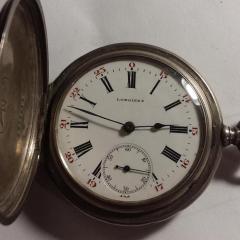Loupe / eyeglass / eyepiece
-
Recently Browsing
- No registered users viewing this page.
-
Topics
-
Posts
-
By KarlvonKoln · Posted
That is a stunning old Sea King you have! And a very cute little furry assistant also. -
By Neverenoughwatches · Posted
No problem with this steel breaking its a perfect working material, the difficult bit is figuring out where to put the detent on the spring. Yessss, at last not a watchmaker but a part maker. Its not perfect, i made 2 mistakes . I made a guess where to put the detent on the spring and i made it a bit too deep and the other was the drill bit caught a wobble on when i tried to open up the post hole 2 tenths. But it works perfectly with a solid click on crown set position so I'm well chuffed. Not sure what to do about harden and tempering it, seems to have a good spring action in its annealed state, do i leave it as is ? -
Thanks.🙏 Very helpful. What a cool and talented and helpful group/community! Well done -- and much appreciated!
-
By ManSkirtBrew · Posted
Just to wrap it up, here are some shots with that vintage Caravelle strap.
-









Recommended Posts
Join the conversation
You can post now and register later. If you have an account, sign in now to post with your account.
Note: Your post will require moderator approval before it will be visible.